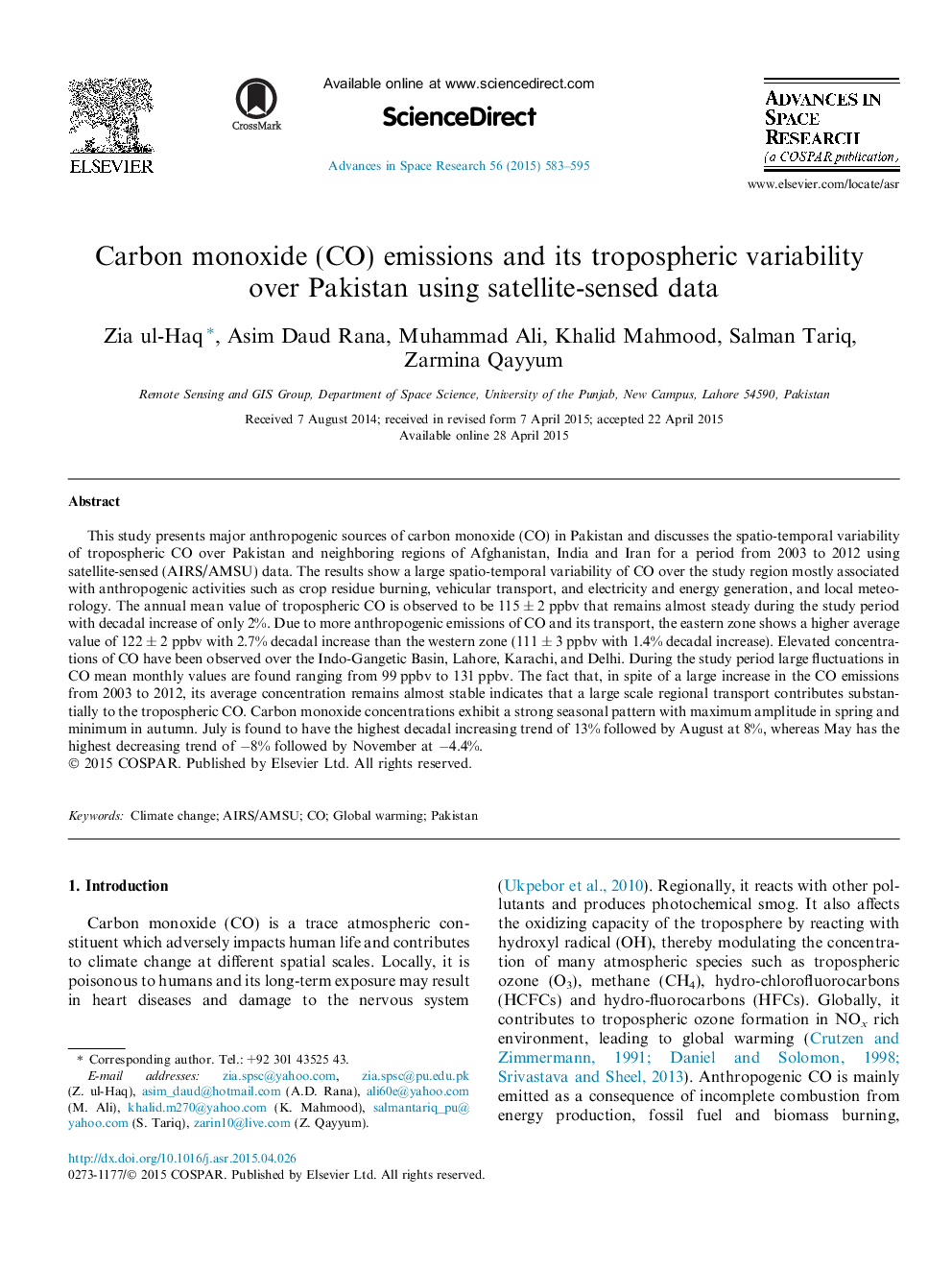| Article ID | Journal | Published Year | Pages | File Type |
|---|---|---|---|---|
| 1763314 | Advances in Space Research | 2015 | 13 Pages |
Abstract
This study presents major anthropogenic sources of carbon monoxide (CO) in Pakistan and discusses the spatio-temporal variability of tropospheric CO over Pakistan and neighboring regions of Afghanistan, India and Iran for a period from 2003 to 2012 using satellite-sensed (AIRS/AMSU) data. The results show a large spatio-temporal variability of CO over the study region mostly associated with anthropogenic activities such as crop residue burning, vehicular transport, and electricity and energy generation, and local meteorology. The annual mean value of tropospheric CO is observed to be 115 ± 2 ppbv that remains almost steady during the study period with decadal increase of only 2%. Due to more anthropogenic emissions of CO and its transport, the eastern zone shows a higher average value of 122 ± 2 ppbv with 2.7% decadal increase than the western zone (111 ± 3 ppbv with 1.4% decadal increase). Elevated concentrations of CO have been observed over the Indo-Gangetic Basin, Lahore, Karachi, and Delhi. During the study period large fluctuations in CO mean monthly values are found ranging from 99 ppbv to 131 ppbv. The fact that, in spite of a large increase in the CO emissions from 2003 to 2012, its average concentration remains almost stable indicates that a large scale regional transport contributes substantially to the tropospheric CO. Carbon monoxide concentrations exhibit a strong seasonal pattern with maximum amplitude in spring and minimum in autumn. July is found to have the highest decadal increasing trend of 13% followed by August at 8%, whereas May has the highest decreasing trend of â8% followed by November at â4.4%.
Keywords
Related Topics
Physical Sciences and Engineering
Earth and Planetary Sciences
Space and Planetary Science
Authors
Zia ul-Haq, Asim Daud Rana, Muhammad Ali, Khalid Mahmood, Salman Tariq, Zarmina Qayyum,
